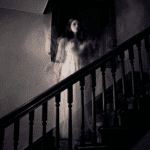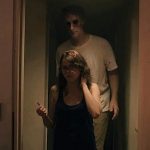 Weird Stuff
Weird Stuff  Weird Stuff
Weird Stuff  Our World
Our World 10 Ways Your Christmas Tree Is More Lit Than You Think
 Movies and TV
Movies and TV The 10 Coolest Stars to Set Sail on The Love Boat
 History
History 10 Things You Didn’t Know About the American National Anthem
 Technology
Technology Top 10 Everyday Tech Buzzwords That Hide a Darker Past
 Humans
Humans 10 Everyday Human Behaviors That Are Actually Survival Instincts
 Animals
Animals 10 Animals That Humiliated and Harmed Historical Leaders
 History
History 10 Most Influential Protests in Modern History
 Creepy
Creepy 10 More Representations of Death from Myth, Legend, and Folktale
 Technology
Technology 10 Scientific Breakthroughs of 2025 That’ll Change Everything
 Weird Stuff
Weird Stuff Ten Bizarre Facts About The Doge Meme
 Our World
Our World 10 Ways Your Christmas Tree Is More Lit Than You Think
 Movies and TV
Movies and TV The 10 Coolest Stars to Set Sail on The Love Boat
Who's Behind Listverse?

Jamie Frater
Head Editor
Jamie founded Listverse due to an insatiable desire to share fascinating, obscure, and bizarre facts. He has been a guest speaker on numerous national radio and television stations and is a five time published author.
More About Us History
History 10 Things You Didn’t Know About the American National Anthem
 Technology
Technology Top 10 Everyday Tech Buzzwords That Hide a Darker Past
 Humans
Humans 10 Everyday Human Behaviors That Are Actually Survival Instincts
 Animals
Animals 10 Animals That Humiliated and Harmed Historical Leaders
 History
History 10 Most Influential Protests in Modern History
 Creepy
Creepy 10 More Representations of Death from Myth, Legend, and Folktale
 Technology
Technology 10 Scientific Breakthroughs of 2025 That’ll Change Everything
10 Spanish-Language Horror Films That Will Haunt Your Dreams
Spanish horror cinema has carved out a unique niche by breaking creative boundaries, mixing psychological terror with supernatural elements that stick with you long after watching. With visionaries like Guillermo del Toro and Paco Plaza leading the pack, Spanish-language horror has become a serious force to be reckoned with. Whether they’re set in the aftermath of Spain’s Civil War or in modern-day apartment buildings, these ten picks highlight the incredible range and artistry that make Spanish horror so uniquely unsettling.
Related: 10 Horror Films That Failed to Launch Their Franchise
10REC
This game-changing found-footage flick follows a TV reporter and her cameraman documenting what should be a boring night at a local fire station. When they respond to an emergency call at an apartment building, things quickly go to hell as residents start acting increasingly violent. Directors Jaume Balagueró and Paco Plaza build tension as authorities lock down the building, trapping everyone inside with whatever mysterious infection is spreading. The cramped setting, shaky camerawork, and rapidly escalating horror make REC one of the scariest found-footage films ever made.
9Pan’s Labyrinth
While often labeled dark fantasy, Guillermo del Toro’s masterpiece Pan’s Labyrinth packs enough horror elements to rank among Spanish cinema’s most frightening offerings. Set just after the Spanish Civil War, the film follows young Ofelia as she navigates both the real-world cruelty of her fascist stepfather and a mysterious underground realm filled with fantastical and terrifying creatures. The Pale Man—a child-eating monster with eyeballs in his palms—still gives me nightmares. Critics have praised the film as “an extraordinary, spellbinding fable” that blends “horrors of both reality and fantasy”, with del Toro creating a world where the monsters in our imagination might actually be less scary than the monsters in our history. Its impressive 95% Tomatometer score speaks to how effectively it weaves political commentary with genuine horror.
8The Orphanage
Produced by Guillermo del Toro and directed by J.A. Bayona, The Orphanage stands as one of the most haunting ghost stories in modern cinema. When Laura returns with her family to the orphanage where she grew up, planning to reopen it as a facility for disabled children, her young son starts talking to an invisible friend. After he mysteriously vanishes, Laura becomes convinced the building harbors supernatural secrets tied to its past. But, beneath all the scares lies a gut-wrenching story about motherhood and grief. The gothic atmosphere and restrained approach create a lingering sense of dread without resorting to cheap jump scares. The emotional family dynamics also give Spanish learners plenty of everyday vocabulary, making it both terrifying and useful if you’re trying to pick up the language.
7Verónica
Based on true events from a 1991 case in Madrid known as the “Vallecas Case,” Verónica follows a teenage girl who accidentally summons something evil using an Ouija board during a solar eclipse. Director Paco Plaza, who also gave us REC, crafts a possession story that feels fresh in how it portrays supernatural terror against the backdrop of ordinary teenage life in working-class Madrid. As Verónica struggles to protect her younger siblings while fighting the malevolent entity, the film builds an oppressive sense of doom.
6The Devil’s Backbone
Another del Toro masterpiece, The Devil’s Backbone takes place during the Spanish Civil War and follows a young boy, Carlos, who arrives at an isolated orphanage haunted by the ghost of a murdered child. Like much of del Toro’s work, the film mixes supernatural elements with historical context, using ghosts as metaphors for unresolved trauma. Critics have called it “a potent ghost story and an intelligent political allegory” [1], praising how it weaves genuine scares with thoughtful commentary on war and lost innocence. Its 93% Tomatometer score reflects both its artistic achievement and its ability to disturb viewers on multiple levels.
5Tigers Are Not Afraid
Issa López’s Tigers Are Not Afraid blends magical realism with harsh realities, following a group of orphaned kids surviving in a city ravaged by drug cartels. After her mother disappears, young Estrella joins a gang of street children while being haunted by supernatural forces. With an impressive 97% Tomatometer score, critics praise how the film “draws on childhood trauma for a story that deftly blends magical fantasy and hard-hitting realism – and leaves a lingering impact”. López builds a world where children must face both human monsters and supernatural entities, making for an emotionally devastating horror experience that doesn’t rely on typical scares but leaves you profoundly shaken nonetheless.
4Sleep Tight
For psychological horror that crawls under your skin, few films match the creeping dread of Sleep Tight (original title: Mientras Duermes). Directed by REC‘s Jaume Balagueró, this disturbing thriller centers on César, a building superintendent with a twisted obsession: making his tenants miserable, particularly the perpetually cheerful Clara. His methodical torment escalates to horrifying levels as he sneaks into Clara’s apartment while she sleeps. The film trades supernatural scares for something far more terrifying—the violation of your most private space. Topping IMDB’s list of best Spanish horror from 2000-2015, Sleep Tight proves that sometimes the scariest monsters are the seemingly normal people who might have keys to your apartment.
3The Platform
The Platform (original title: El Hoyo) delivers a different kind of horror through its dystopian setup—a vertical prison where food descends on a platform from top to bottom, with inmates on upper levels feasting while those below starve. This nightmarish allegory examines how quickly we turn on each other when resources run scarce. Director Galder Gaztelu-Urrutia creates terror through the film’s stark vision of human nature pushed to extremes, with cannibalism and brutality becoming the norm as desperation grows. The horror comes not just from graphic violence but from the disturbing reflection of social inequality taken to its logical conclusion.
2Piggy
Carlota Pereda’s Piggy transforms the nightmare of teen bullying into a complex moral dilemma with bloody consequences. Sara, an overweight teenager mercilessly tormented by her peers, witnesses her bullies being kidnapped by a mysterious stranger but chooses to keep quiet about what she saw. With an impressive 91% Tomatometer score, critics praise how the film “deploys genre thrills in service of sharp social commentary”. Piggy stands out for its unflinching look at teenage cruelty and its refusal to offer easy answers or straightforward revenge satisfaction. Instead, it creates a morally murky scenario that forces viewers to question where their sympathies lie as the violence escalates, making it one of the most thought-provoking entries in recent Spanish horror.
1When Evil Lurks
One of the newest entries on this list, Demián Rugna’s When Evil Lurks (original title: Cuando Acecha La Maldad) has quickly established itself as one of the most terrifying Spanish-language horror films in recent memory. The film follows two brothers who discover a man infected by a demonic entity in rural Argentina, unleashing a contagion of evil throughout their community. With a jaw-dropping 96% Tomatometer score, critics celebrate it as “A hard-hitting horror film whose surface-level frights are just as engaging as its thematic concerns”. Rugna crafts scenes of such intense dread and shocking violence that When Evil Lurks has already drawn comparisons to horror classics like The Exorcist, making it essential viewing for anyone seeking genuine scares that will stick with them long after watching.








